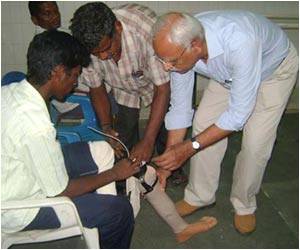A deeper insight into the human's sense of touch has been provided by a new study recently. The sense of touch has been generally taken for granted in neuroscience.

Somatosensation, which is another word for our sense of touch, occurs in a number of forms, like feeling texture, temperature, pressure, pain or vibration. It's responsible for proprioception, which helps us know where we are within our environment.
Scientists know a good deal about the molecular receptors that mediate the different types of somatosensation, but they know little about how touch was represented in the brain.
Using the fos-GFP mouse, a transgenic mouse model Barth created to study activity in live neurons, she and her colleagues set out to see if these neurons were generally more excitable, or if they responded specifically to one tactile stimulus.
They found that these neurons reacted much more quickly and strongly when a puff of air was directed at the mouse's whiskers, while other neurons had little or no response.
They also found that the neurons in question received direct synaptic input from the posteromedial nucleus of the brain's thalamus. This showed that the neurons that react to the puff-of-air stimulus have a dedicated, unique sub-network of connections that enable them to communicate with one another and amplify the information they are receiving from the stimulus.
Advertisement
The research is published in the Neuron.
Advertisement










